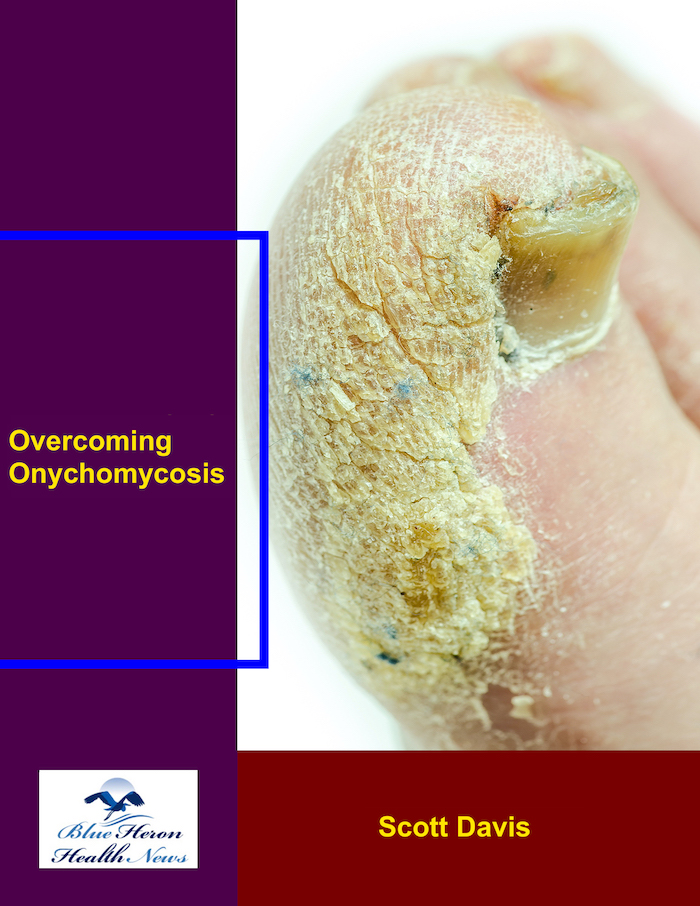
Overcoming Onychomycosis™ By Scott Davis If you want a natural and proven solution for onychomycosis, you should not look beyond Overcoming Onychomycosis. It is easy to follow and safe as well. You will not have to take drugs and chemicals. Yes, you will have to choose healthy foods to treat your nail fungus. You can notice the difference within a few days. Gradually, your nails will look and feel different. Also, you will not experience the same condition again!
What is the role of non-dermatophyte molds in onychomycosis?
Non-dermatophyte molds (NDMs) are a group of fungi that can cause onychomycosis, a fungal infection of the nails. While dermatophytes are the most common cause of onychomycosis, non-dermatophyte molds are increasingly recognized as causative agents, particularly in chronic or nail trauma-related infections. Here’s the role of non-dermatophyte molds in onychomycosis:
1. Types of Non-Dermatophyte Molds (NDMs)
- Non-dermatophyte molds include various species of fungi that do not belong to the dermatophyte group, which is known for causing infections in keratinized tissues like skin, hair, and nails. Common types of non-dermatophyte molds that can infect nails include:
- Aspergillus spp.
- Fusarium spp.
- Scopulariopsis spp.
- Acremonium spp.
- Trichoderma spp.
These molds are generally environmental fungi that are often found in soil, plants, and decaying organic matter.
2. Pathogenesis of Non-Dermatophyte Molds in Onychomycosis
- NDMs can invade the nail through cracks, trauma, or pre-existing nail damage, particularly in individuals with compromised immunity or diabetes. Unlike dermatophytes, NDMs do not have the same specialized enzymes to break down keratin (the protein in nails), but they can still colonize the nail plate, particularly when it is weakened or damaged.
- NDMs tend to cause chronic, slow-growing infections, and may infect the nail bed or plate, leading to thickening, discoloration, crumbling, and detachment of the nail. The infection is often more resistant to treatment than dermatophyte-induced infections.
3. Risk Factors for NDM Infections
- Trauma or injury to the nails: Physical damage to the nails can create an entry point for these molds.
- Diabetes: People with diabetes have a higher susceptibility to fungal infections, including those caused by NDMs, due to poor circulation, high blood sugar, and weakened immune response.
- Immunocompromised states: Conditions like HIV/AIDS, chemotherapy, and organ transplants can impair immune function, making individuals more prone to fungal infections by NDMs.
- Environmental exposure: People who work in environments where exposure to soil, plants, or decaying organic material is common (e.g., farmers, gardeners) may be more at risk for NDM-related onychomycosis.
- Chronic conditions: Conditions like vascular disease, hypertension, or athlete’s foot can make individuals more susceptible to fungal infections, including those caused by NDMs.
4. Clinical Features of NDM Onychomycosis
- NDM infections can present similarly to dermatophyte-induced onychomycosis, with symptoms including:
- Nail thickening
- Discoloration (yellow, brown, or greenish hues)
- Crumbly or brittle nails
- Distortion or detachment of the nail from the nail bed
- Pain or tenderness around the nail
- NDM infections, however, are often more persistent and may be resistant to treatment compared to dermatophyte infections.
5. Diagnosis
- Microscopic examination and culture of nail samples are crucial for identifying the specific fungal species responsible for the infection. NDMs can be more difficult to diagnose than dermatophyte infections because they do not always exhibit the same growth patterns or characteristics in cultures.
- PCR-based diagnostic techniques may be used in some cases for more accurate identification.
6. Treatment
- Treatment for onychomycosis caused by NDMs often involves topical or oral antifungal medications. However, these infections tend to be more resistant to standard treatments than dermatophyte infections, and may require more aggressive therapy.
- Oral antifungal agents such as terbinafine, itraconazole, or fluconazole are commonly used. In some cases, the treatment may need to be extended for a longer period compared to dermatophyte infections.
- Topical antifungals may be used, but their effectiveness against NDMs may be limited, especially in severe or advanced cases.
- In cases of severe nail damage or non-responsiveness to antifungal therapy, nail avulsion (removal) may be necessary to eliminate the infection and allow for regrowth of a healthy nail.
7. Prognosis
- The prognosis for onychomycosis caused by NDMs can be variable, depending on factors such as the species of mold, the individual’s immune status, the extent of the infection, and the effectiveness of treatment.
- In many cases, NDM-induced onychomycosis can be chronic and difficult to treat, requiring long-term antifungal therapy and sometimes repeated courses of treatment. Persistent infections may lead to permanent nail damage or loss.
8. Prevention
- To prevent NDM-related onychomycosis, the same general measures used for preventing fungal infections can be applied, such as:
- Avoiding nail trauma
- Maintaining good foot hygiene
- Wearing protective footwear in communal areas (e.g., swimming pools, locker rooms)
- Regularly trimming nails and keeping them clean and dry
- Managing underlying health conditions like diabetes or immunocompromised states to reduce susceptibility
Conclusion:
Non-dermatophyte molds play a significant role in the development of onychomycosis, particularly in individuals with chronic conditions, nail trauma, or immunocompromised states. These molds are harder to treat than dermatophyte infections and may require more aggressive, long-term antifungal therapy. Early diagnosis, proper treatment, and preventive measures are essential to managing onychomycosis caused by non-dermatophyte molds.
Overcoming Onychomycosis™ By Scott Davis If you want a natural and proven solution for onychomycosis, you should not look beyond Overcoming Onychomycosis. It is easy to follow and safe as well. You will not have to take drugs and chemicals. Yes, you will have to choose healthy foods to treat your nail fungus. You can notice the difference within a few days. Gradually, your nails will look and feel different. Also, you will not experience the same condition again!